Frankfurt Tourism Information

When you hear about Frankfurt, many associate it with the financial hub of Germany and in fact of Europe. Millions travel through Frankfurt international airport, and many foreigners visit frequently on business, so it's not a surprise that the city may be overlooked as a tourist destination. However, a trip to Frankfurt can be a very rewarding experience for those who take the time to explore.
Known as Germany's financial powerhouse, Frankfurt is nevertheless packed with cultural and historical attractions and has a lively nightlife and restaurant scene. Frankfurt has one added benefit over the rest of the cities in Germany and Europe; its superb transportation hub, via train, bus and plane, making Frankfurt a direct destination from many cities around the world!
When you walk around Frankfurt, you will realise how well-organised it is, clean, with open parks and plenty of shopping malls, museums, interesting historic sites, world-class opera and jazz and a few really charming neighbourhoods, such as Nordend and Bockenheim. Historical highlights include the Eschenheimer Turm, a 15th-century tower once part of the city's fortifications. Frankfurt is also a surprisingly good city to explore if you're travelling with kids, like to visit the Frankfurt Zoo. Also the city tourism authorities gives out discounts available for transport, museums, tourism passes, or restaurants offers.

Frankfurt has an oceanic climate, this means its characterised by hot summers and cold winters. However, temperatures are not extreme. Summers are sunny and hot, with predominantly blue skies but can also can get weeks where it can be quite wet, with frequent rain. Winters are fairly cold and can bring occasional violent storms. Light snowfall is to be expected and it can get windy which adds to the chill factor. The average temperature in mid-winter (January) is 1°C, and in mid-summer, July the average temperature is 23°C.
Although summer is a nice time to visit, it is also the most popular time and it can get busy, crowded and expensive.
Therefore, we recommend, visiting outside of this period, visitors can get pleasant weather, with a mix of cloudy and sunny days in spring (March to June) and autumn (September to December).
Frankfurt has one of the largest and most frequent transportation links by bus, train and plane in Europe! Therefore there are multiple options when arriving to the city. To start with, most likely many visitors will take the plane. There are 2 main airports in Frankfurt; Frankfurt Am Main (FRA) the main international hub and Frankfurt Hahn (HHN), which serves mostly low cost airlines.
- Frankfurt Airport (FRA): is only 13 Km from the city centre. It is the main airport most flights arrive, with Lufthansa having its airline hub here. To get to the airport you have several options. By train; it's the quickest and most popular way to get to the city centre or connect to other services across the country thanks to having its own long distance station. The other station at the airport, the regional train station, located one level down from T1, is served by regional trains with direction to Frankfurt centre (HBF), Hanau, Aschaffenburg, Mainz, and Wiesbaden. You can use either the trains of the S-Bahn Lines S8 and S9 or the Regional Express (RE) with the numbers 59, and 75. Tickets cost €4.95 one way (buy tickets from the green machines) By bus, there are a number of buses which connect to different districts of the city, check here to see the services of the busses.
- Frankfurt Hahn Airport (HHN): is located west of the city, however at 120 Km from Frankfurt, you need to consider an extra 2 hour of travel to/from it. There are only busses which connect the airport to the rest of the country. (Check this map to view services) You can reach the cities of Frankfurt (via the other airport), Koblenz, Mainz, Cochem, Karlsruhe, Simmern, Trier and also Luxemburg city. Checking the timetables of the different bus operators is advised as only the Frankfurt city trip is more often. Prices range from €5 when bought online or €20 when bought on the bus. To buy the bus tickets to/from Frankfurt Hahn to the city center, click this link for Flibco.com.
Once, in Frankfurt, getting around is extremely easy thanks to a very extensive network of public transport which includes U-Bahn, (metro), S-Bahn (regional trains) trams, busses and regional commuter trains.The U-Bahn and buses operate between about 4 am and 1am, and there are also several night bus routes. Fares are standard and are based on a zone system. Most tickets are valid for an hour and can be used for any number of transfers between all modes of public transport within that time. Tickets must be bought prior to boarding. The U-Bahn and buses operate between about 4 am and 1am, and there are also several night bus routes. Fares are standard and are based on a zone system. Most tickets are valid for an hour and can be used for any number of transfers between all modes of public transport within that time. Tickets must be bought prior to boarding.
The Frankfurt Card (available from the tourist office) is good value, allowing for unlimited travel within greater Frankfurt, plus airport shuttle transport and discounted admission to museums. It starts from only €10.50 for 1 day ticket or €15.50 for 2 days. You can also buy single, a day, 7 days or up to 30 days tickets if you are only using the public transport and not visiting museums or attractions.
There are numerous fares types for Frankfurt city:
- One Way Ticket: A single fare ticket (Einzelfahrschein) is valid for one person and a two hour journey through the city. Fares: €2.75.
- Short Distance Ticket: valid for a short distance ticket (Kurzstrecke) costs 1.85 Euros.
For more information, see the maps below ready to download or go onto the Frankfurt Transport Information site.
✔️Tip: If you travel often on a day, the day ticket will compensate much more for only €5.35, valid in central Frankfurt only.
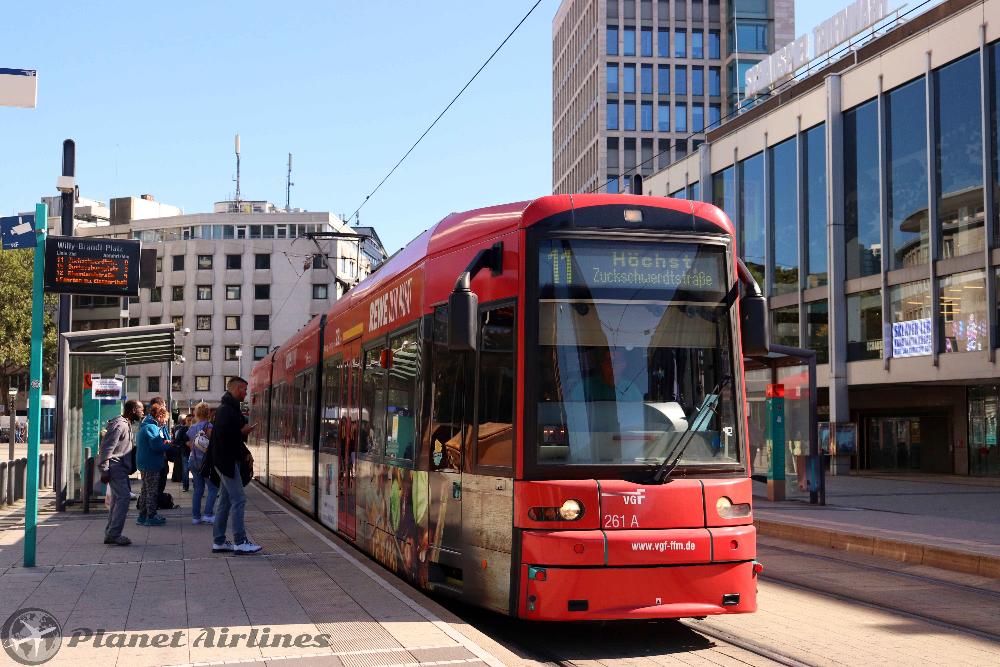
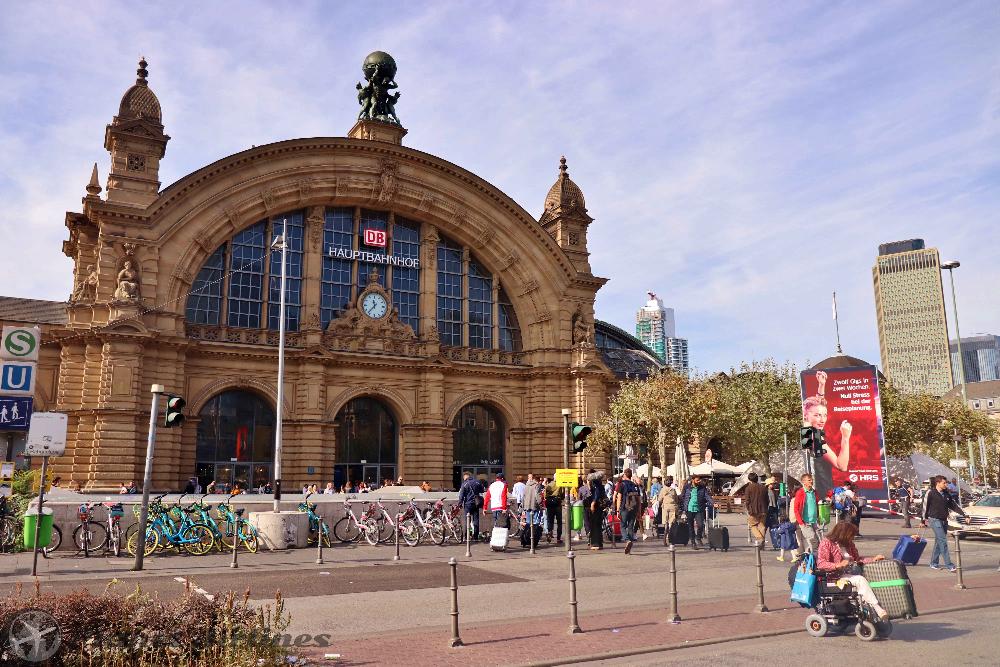
Frankfurt has some interesting historical attractions and combines a modern city with tall skyscrapers with more traditional German style houses, parks and contemporary thrills. Sightseeing in Frankfurt is comfortable by walking as mostly it's a flat layout city. Although its best to visit during the Spring and Autumn, for more pleasant weather, Frankfurt is essentially a year-round destination, with December being exceptionally more beautiful with the Christmas lights and markets.
Below you will find the highlights of what to see and do whilst you visit Frankfurt:
- Eschenheimer Turm: is one of the few remaining towers of the medieval fortifications that once encircled the city of Frankfurt. The 47m Gothic tower was built as part of the medieval wall which encircled the city in the 15th century, when approximately 60 towers surrounded the city. The tower is both the oldest and the most unaltered building in the largely reconstructed city centre. To visit the tower, it costs... To get there take the U-Bahn to Eschenheimer Tor.
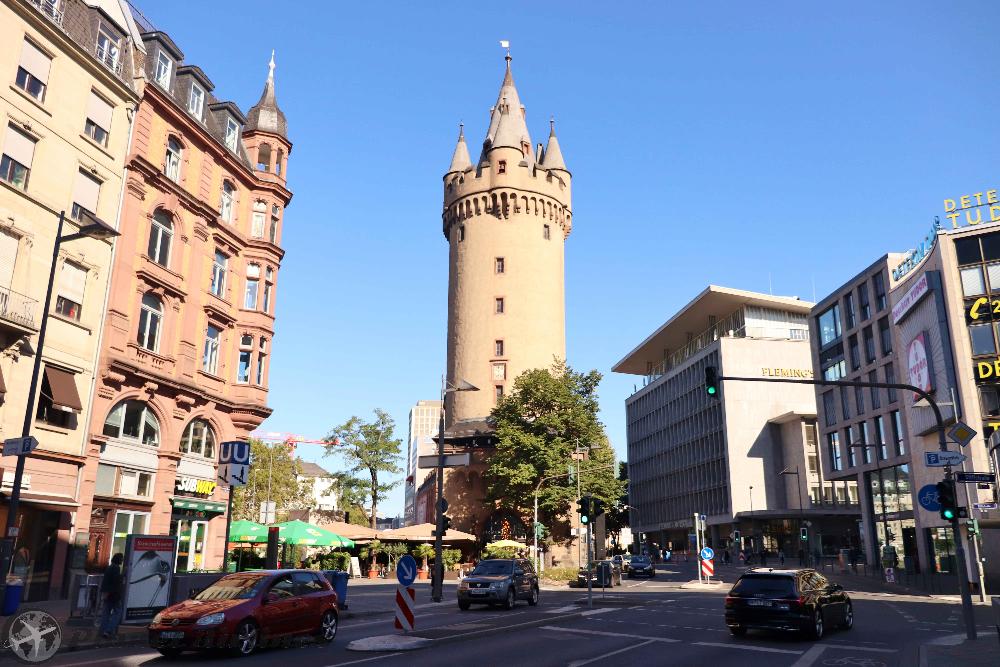

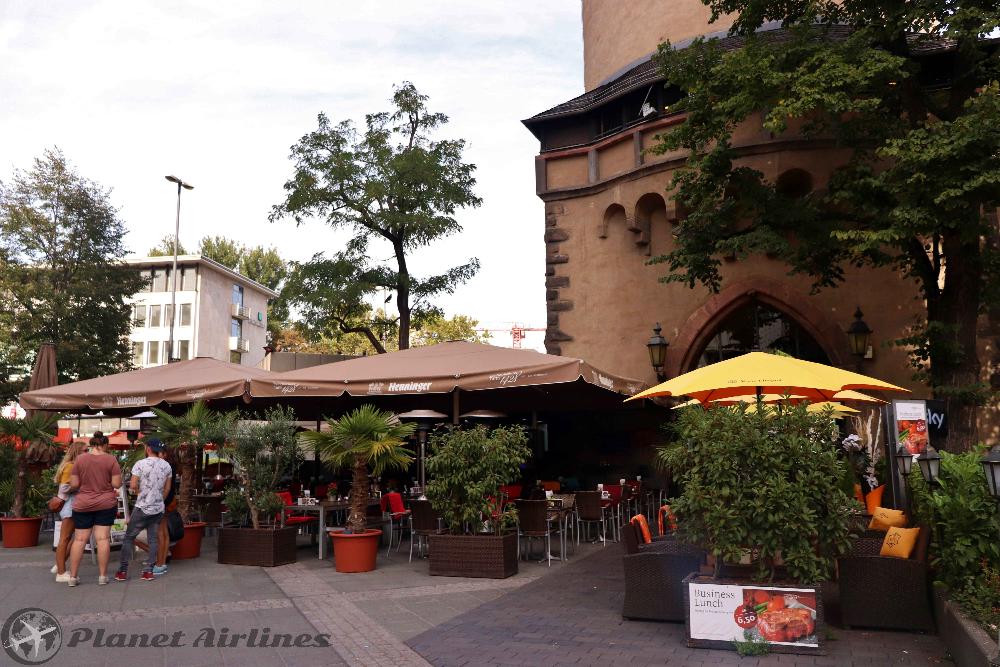
- Römerberg Square: is Frankfurt’s busiest and most beautiful market square. For most tourists, this is the first stop in Frankfurt’s Old Town. Just a few footsteps from St. Paul’s Church, you will get a glimpse of this city’s medieval centre. Its history goes back to the 12th century, having served as a trade hub drawing visitors and merchants from countries as far as France and Italy.
- Nearby is St Paul's Church, it's known locally as Paulskirche, a historical church dating back to 1789. It was consecrated as a protestant church and has served its fair share of purposes: as a home to Germany’s first National Assembly, a venue for awards ceremonies and other special events. To get to the square and the church take the U-Bahn to Dom/Römer.
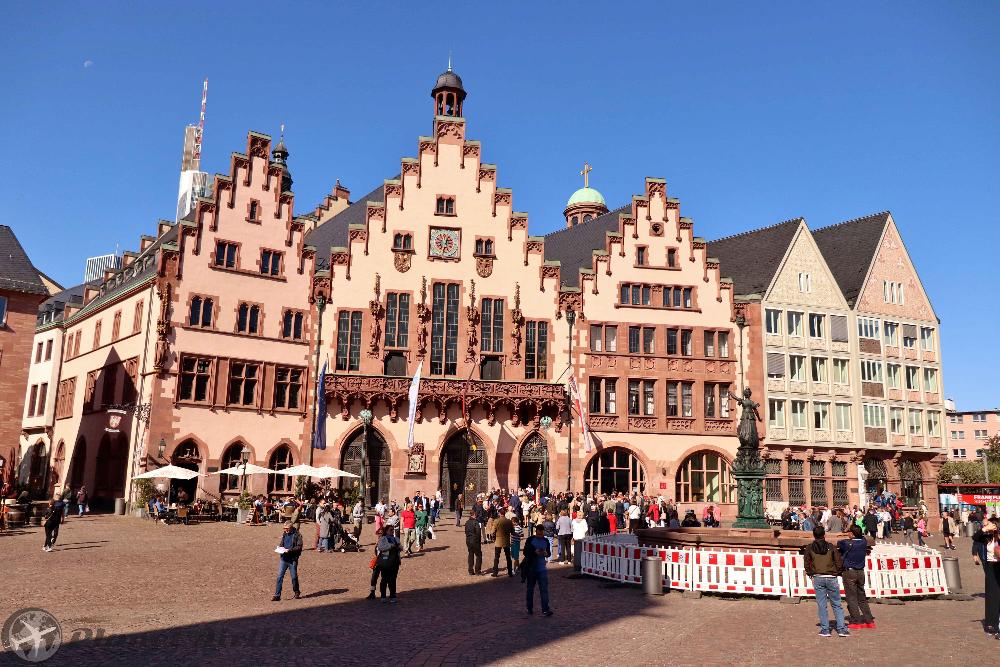
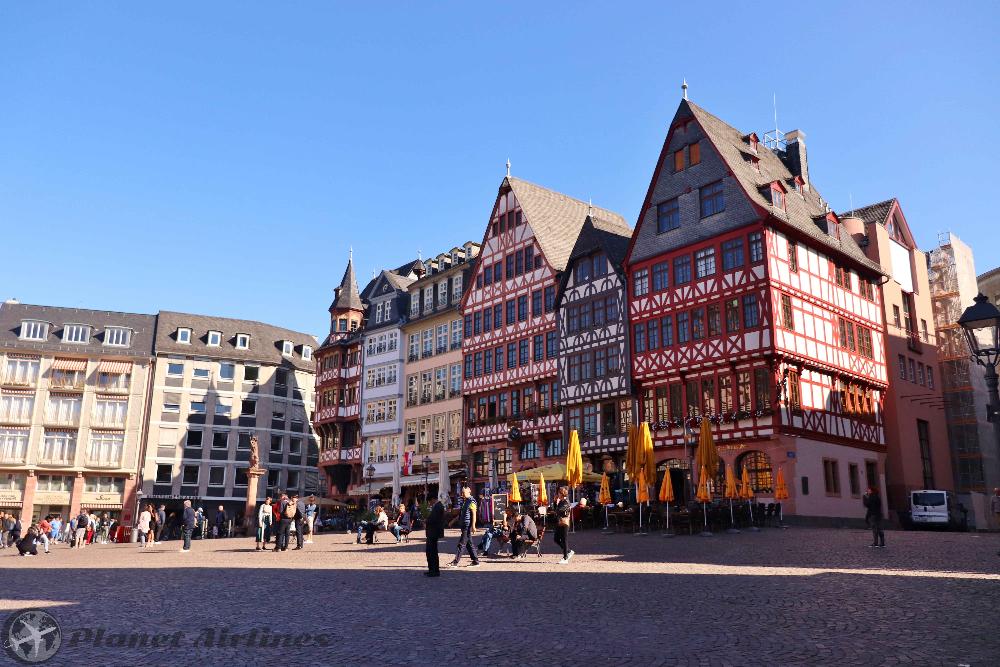

- Historisches Museum: Also located within the old city centre, the Historical Museum has many permanent exhibitions featuring objects and works of art ranging from the Middle Ages to the present day. The museum's changing exhibitions cover a range of themes such as cultural history, art history and general history. Collections feature examples of gold and silver crockery and jewellery; pottery and porcelain; paintings and photographs; and scaled-down models of the Altstadt (Frankfurt old town) at various periods of its development. The museum is useful for giving visitors an idea of what Frankfurt looked like before the damage of World War II when it was quite a different city. Price is €7 to access the museum. To get there take U-Bahn to Dom/Römer.
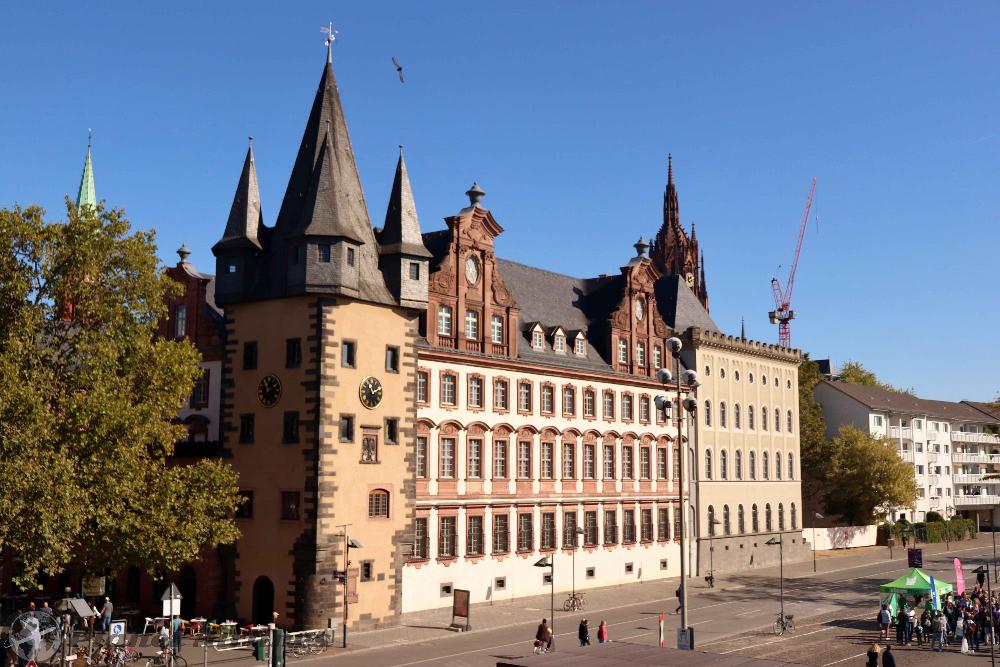
- Dom Sankt Bartholomäus: Is the Cathedral of Frankfurt, which you can see from far away, with its imposing 95m spire, contrasting sharply with the modern skyscrapers in the downtown area. The cathedral was built in the 14th and 15th centuries, and has seen the crowning of kings and emperors. St Bartholomews has been rebuilt several times, once in 1867 after a fire, and again in the 1950s following damage suffered in World War II. The architecture is traditional Gothic. You can climb the winding spiral stairs to reach the bells in the tower for some spectacular views. There is a small museum and shop inside. To get there, take U4 U-Bahn to Dom/Römer.

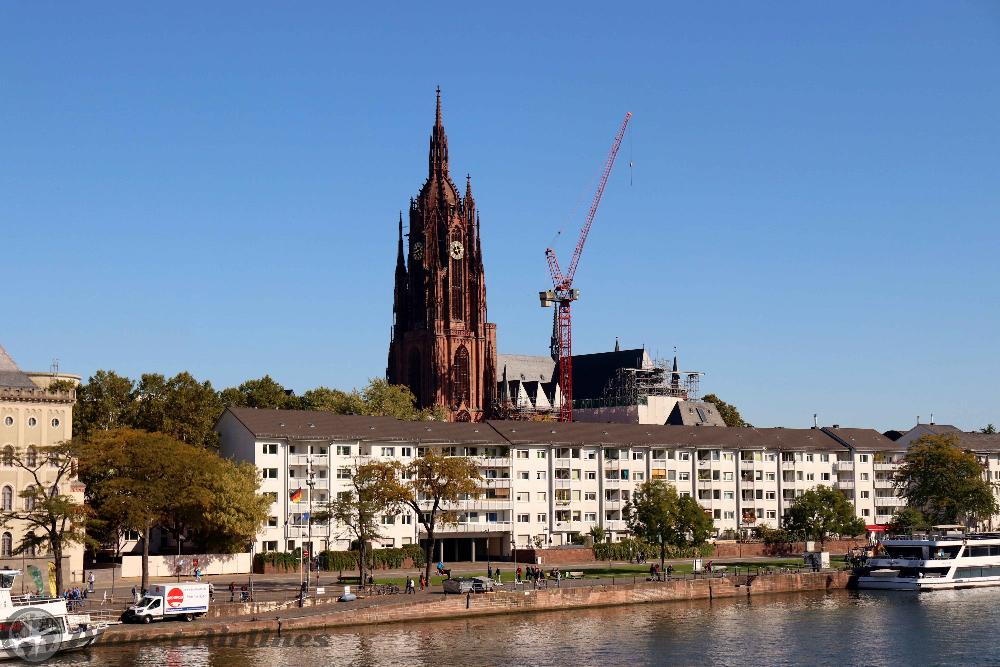
- Main Tower and the Euro monument: in Frankfurt’s ever-growing skyline of skyscrapers, there’s one building which stands out, and offers the public with a viewing platform. The 200 metre Main Tower opened in the year 2000 and is the fourth-tallest building in the city, which also makes it the fourth-tallest in Germany.(2019). As its located on the east side of the Bankenviertel there’s a clean view from the top over the Altstadt (old town) and the Main river. The tower was designed by Schweger und Meyer.
Closest U-Bahn is Willy-Brandt-Platz.
✔️Tip: Take a walk around, sit in the nearby gardens and squares, admire the financial buildings looming high above. In this area you will notice a special sculpture, which those from Europe, will find very easy to recognise! The symbol of the € with its yellow stars stands for the new European currency, which was established on 1 January 2001, and was created in Frankfurt. One can see the monument standing outside and take pictures day and night!


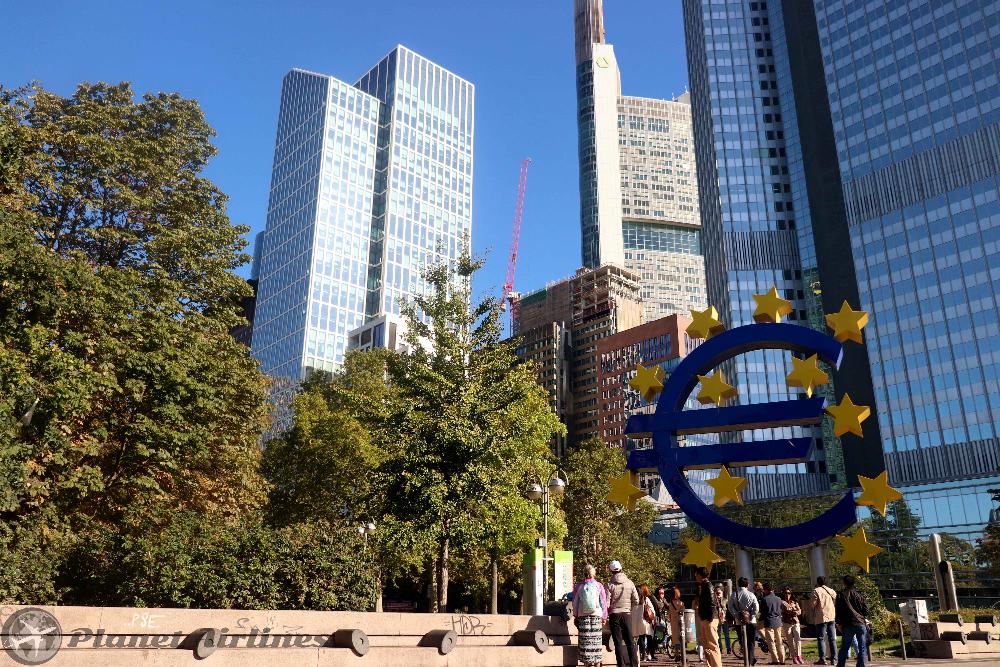
- Alte Oper: The original opera house in Frankfurt is now the Alte Oper (Old Opera), a concert hall and former opera house. It was inaugurated in 1880 but destroyed by bombs in 1944. It was rebuilt, slowly, in the 1970s, opening again in 1981. The square in front of the building is known as Opernplatz (Opera Square), which is an ideal place for walking around or sit to relax and take in the great view. To get there take the U-Bahn to Alte Oper (or walk 5 min from the city centre).
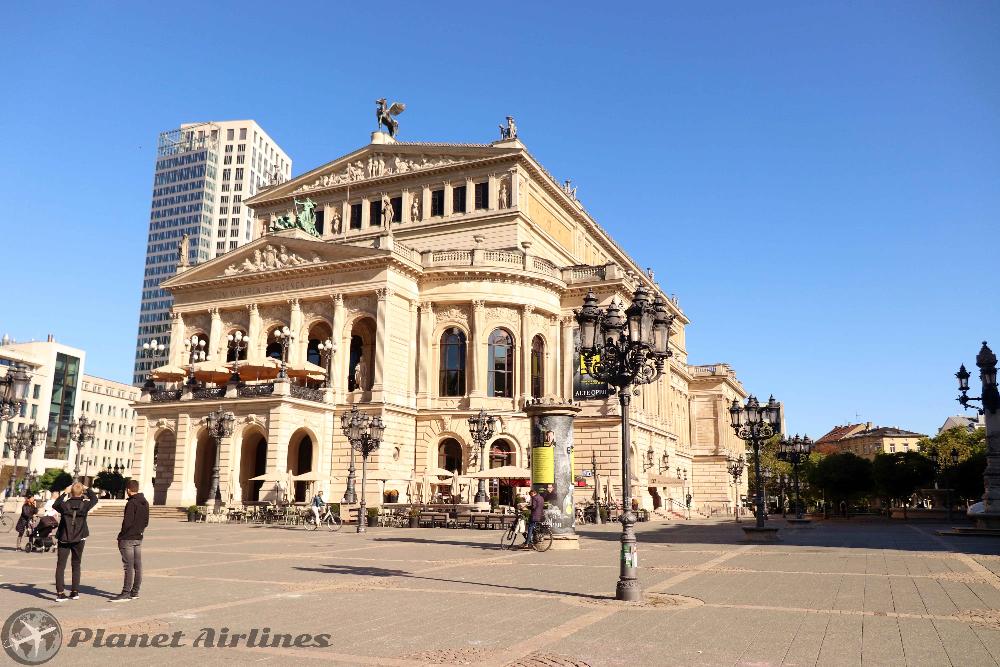
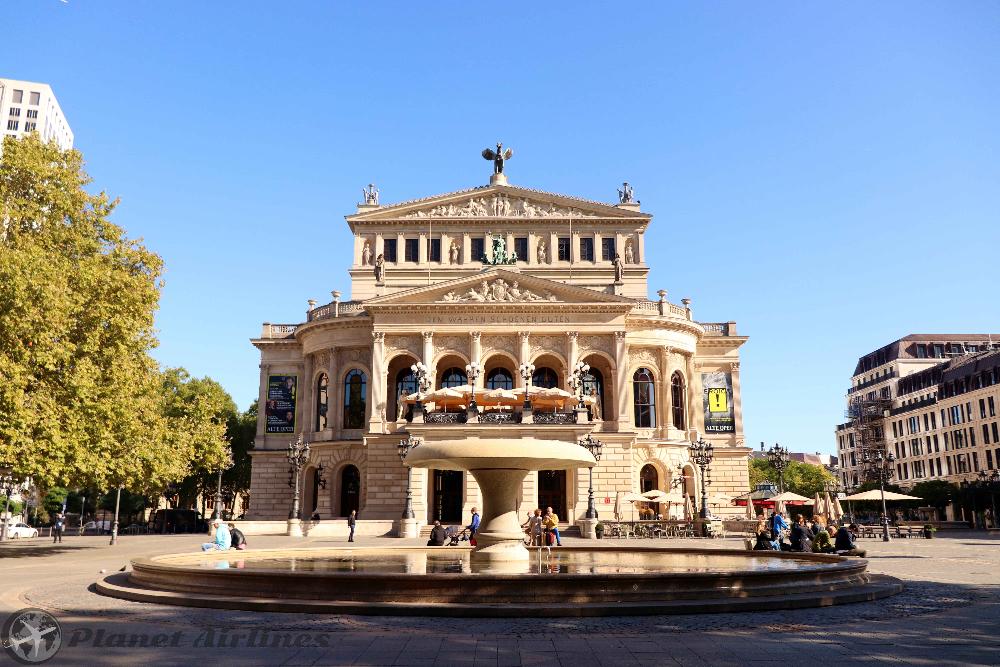
- Botanical Gardens: The gardens are designed to take visitors on a journey through different areas of the plant kingdom, from the hardwood forests of North America to the barren savannah of Africa. The gardens cover more than eight hectares and contain more than 6,000 different botanical species, from exotic rainforest flowers to European weeds. There are many enclosed greenhouses so there is still lots to see in winter. Aside from admiring the flora, there are fun family activities like miniature golf and boat hire to enjoy, as well as a gift shop and a cafe. Entrance is free. To get there, the closest U-Bahn is Bockenheimer Warte.
You might not expect a city known for its banking industry to have much of a nightlife, but Frankfurt parties hard after dark, specially during the weekend! Some of the best clubs in Frankfurt feature techno and house music, and the clubbing scene is energetic and trendy. Those looking for something slightly more sophisticated will find that Frankfurt is one of the jazz capitals of Europe. For opera and classical music see what's playing at the Oper Frankfurt and the venerable Alte Oper. Frankfurt is also home to many theatres.
The Frankfurt nightlife is concentrated around the city's northern area, near Fressgasse, Zeil and Römerberg. The cobbled lanes of Sachsenhausen have some especially lively Latin, Irish and local places to enjoy. Adult entertainment is also a booming industry in Frankfurt and the area known as Bahnhofsviertel is one of the largest red light districts of Europe!
Shopping in Frankfurt is well known for its specialist food stores, cafés and delicatessens lining the Fressgasse area. You can expect a lot of local and international shops selling all kind of food from over the world.
The Zeil in Frankfurt is a large street where all the biggest stores and shopping centres can be found. This is the place for clothes shopping, browse through bookstores, or look for end-of-season sales at the mainstream stores.
The Apfelwein district in Sachsenhause is the best place to find traditional German souvenirs: favourites include ceramic German steins, lederhosen, cuckoo clocks, and traditional Christmas decorations.
For high end shopping, head to Goethestrasse for designer shops and jewellery stores. Schweizerstrasse, in Sachsenhausen, is home to exclusive boutiques and independent stores aimed at the trendier, younger market.
Most Frankfurt shops are open from 10am to 10pm, from Monday to Friday, and from 10am to 4pm on Saturdays. Most shops are closed on Sunday.
Those planning to travel to Frankfurt for tourism and pleasure should check the events calendar and perhaps avoid coinciding with one of the many large international trade fairs and expos that are held in the city. These can make affordable hotel rooms hard to find and prices for all types of accommodation will be inflated considerably. Basic Hotels can cost anything from €40 upwards, wit the chain Hotels in the city costing more like €150 per night!
To avoid high prices, first travel outside the business season or any expos or big events, secondly, don't stay necessarily in the city centre, as Frankfurt has excellent transport links, you can find cheaper accomodation 15-20 min out of the city and catch frequent trains or busses. For budget travellers, hostels and shared accomodation is also a good possibility with prices of €20 per night. Airbnb and Booking.com also offer private apartments if you are staying longer.
Staying in Frankfurt depends largely in what is your main reason for the trip as the city can be seen easily within a day, just walking around or cycling! It has a few museums and places of interest that are worth paying to learn more about the city, as well as joining a boat tour for example. Many visitors consider Frankfurt, as a weekend break, and they are not wrong, but there are many things to keep you busy and amused as from the list we mentioned on "things to see and do". Two to 3 night stay would be ideal to see the city comfortably, visits some cultural places and relax.
Frankfurt Photo Slide 📷














.png)